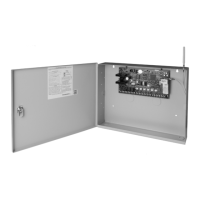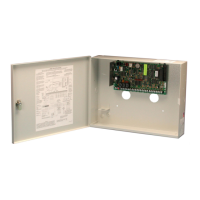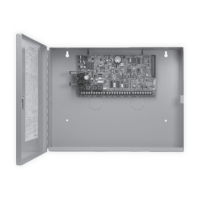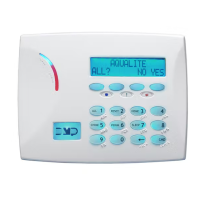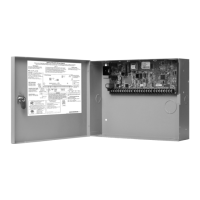12 XR150/XR350/XR550 User Guide Introduction
Disarming
Turns off one or more areas of the system. When disarmed, the
system does NOT sound alarms or send alarm reports to a central
station when a burglary zone faults.
Fault
You may see the keypad display FRONT DOOR —FAULT. This means
that there is a problem with the front door, such as the door being
open when you are arming the system. If you see a —FAULT display,
attempt to correct the problem (in this case shut the door). After
the zone is in a normal state, you may arm the system. You may
also bypass the zone and then arm the system.
Zone
A zone refers to one or more protected openings (doors or
windows) or pro tection devices (motion or glassbreak detectors)
grouped together under the same zone name and number.
Often, similar devices in the same general location share the same
zone. For example, the windows on the east side of the premises
can all be grouped together in a zone named E. WINDOWS.
Instant Zone
Interior protection devices and perimeter devices, such as exterior
windows, passive infrared detectors (PIR), and non entry doors,
are typically not programmed with delay times. If these zones are
tripped while the system is armed, an alarm instantly occurs.
24-hour Zone
A 24-hour zone is not turned on or off by arming or disarm ing your
system. Some examples of 24-hour zones are re zones, panic
zones, and temperature control zones.
Entry or Exit zone
Almost all systems have one or more doors through which you can
access the premises. These doors are programmed with a delay
time to allow you to enter or exit without setting off the alarm.
When you arm the system, activity on this zone is ignored until
the exit delay time expires. Once that time has expired and the
system is fully armed, opening the door causes the panel to start
the entry delay time. During the entry delay time, you must enter
a valid user code to disarm the system or an alarm occurs.
Status
Status is a feature that automatically displays the armed or dis-
armed status of your system on the keypads. Alarm or trouble
con ditions on a zone or a system monitor such as AC or battery
trouble can also display. There are two types of status information
available: Armed Status and Status List.
Status List
The keypad Status List displays any alarm or trouble condition on
a zone, and any trouble condition on an internal system monitor.
The system monitors include the AC power, battery power, panel
box tamper, printer, and phone lines. If more than one alarm or
trouble condition occurs at the same time, the keypad sequences
this information on its display.
If the alarm is from a 24-hour zone or a system monitor, it remains
in the Sta tus List until it re stores. If one or more armed burglary
zones trip at the same time, the last one to trip remains in the
Status List. This is to ensure that if a burglary has occurred the last
zone tripped remains displayed even if it has been restored.
Armed Status
Armed Status is the keypad display of the current armed condition
of areas within your security system.
If your system is set up as an Area system with areas one to eight,
the display shows: 1 2 3 4 5 6 7 8. When you arm areas 1, 3, 5, and
7 the keypad displays: 1 3 5 7.
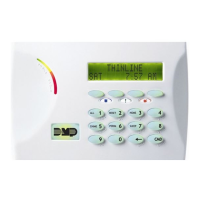
